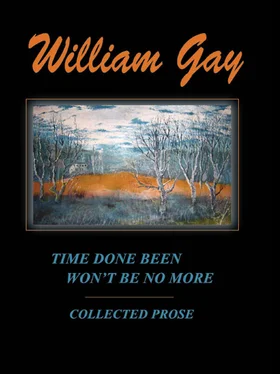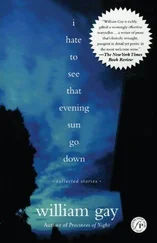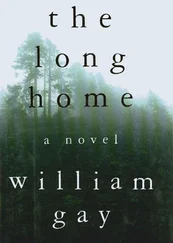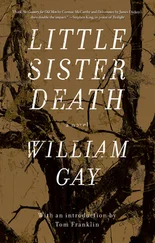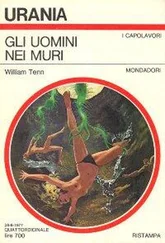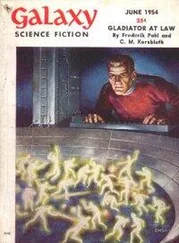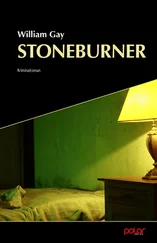Smith lived always in a sort of impoverished Bohemia, first in the North Beach poets’ area of San Francisco, then in Greenwich Village, then in the Chelsea Hotel in New York City. When the Beatnik movement arrived, it seemed to have been conceived exclusively with Smith in mind. For years he dwelt on its fringes. Allen Ginsberg put him up for a while, and Smith did the art for a volume of Ginsberg’s poetry.
Essentially, though, he lived wherever he could get a roof over his head, preferably one large enough to cover the vast collection of things he was amassing. John Cohen interviewed him for a 1968 issue of Sing Out!
Here’s what Cohen saw when he came through the door:
The closet is filled with dresses from the Florida Seminole Indians. One corner of the room, marked with KEEP OUT signs, is filled with Ukrainian Easter eggs; on the bureau are stacks of mounted string figures; behind them is a movie camera alongside portfolios of his paintings and graphic work. In another corner is a clay model of a landscape which was recreated from a dream, piles of beautiful quilts and other weavings, as well as a collection of paper airplanes from the streets of New York. Small file cabinets of index cards are distributed between the pages of research books. Each book becomes more exotic by its juxtaposition with other such books, Mayan codices beside Eskimo anthropology studies under a collection of Peyote ceremonial paintings, etc., etc.
He once lost a huge part of his collection when he was evicted from a New York hotel; the landlord simply had it hauled away. But Smith had shifting interests, and he had grown adept at starting over.
All this time he had also been collecting phonograph records, anything that struck him as odd or different. These were mostly rural and what were then called race records. At one time he claimed to have owned a hundred thousand of them. He had always been obsessed with sound, but he said that his primary interest in recording was the technology of it; he was staggered by the idea that you could take what had always been an oral tradition and market it out of a Sears and Roebuck.
Always broke, Smith contracted with Moses Asch of Folkways Records to unload part of his collection. Then the deal was amended. A record assembled from his 78s would be issued, and Smith himself would compile it. It would turn out to be his major work of art.
As Cantwell wrote, Smith was creating a sort of memory theater, a mnemonic library, a primitive thinking machine that would, in Smith’s words, program the mind.
The idea of a memory theater is one that fascinated Elizabethan England: an arena containing the entire cosmos of knowledge categorized by its cabalistic, astrological, and alchemical symbols, where scholars could enter at will and rummage through or pore over manuscripts. Smith never quite got away from alchemy.
In the beginning it sounds like most generic folk collections: Appalachian reworkings of English ballads, some reels and dance tunes, songs about house carpenters, errant wives, wagoner’s lads. Performers like Uncle Eck Dunford, Buell Kazee. But entering Smith’s world is like progressing down a carnival midway past the kiddie rides and Ferris wheels until you notice that the sideshows have grown stranger and stranger, that the barker’s spiel has turned ambiguous, and that his features are stamped with sinister intent.
Deeper in the Anthology , things have changed. The songs are no longer child ballads or rustic reels or cautionary fables, and they are no longer distanced or detached but have become modal ballads that inextricably link singer and song. We have entered a realm where the words mean more than what they say because the performance is part of what is being said. The teller can no longer separate himself from the tale; they have merged to form something larger than both.
Some of the songs start out as if they were going to be straightforward renderings of actual events, then progress to ironic asides on these events, then to biographical tidbits about the singer himself. Furry Lewis’s 1927 recording of Kassie Blues is one example. Originally released as Part one and Part Two and encompassing both sides of a 78 rpm record, it begins with an account of Kassie Jones, the fabled brave engineer. Then abruptly we’re out of Jones’s world and into Furry’s, caught up in Furry’s troubles with the law for bootlegging, with the woman who, when the police chase him to her door, bids him to her bed; then a jumpshot forward to Jones’s children crying on a doorstep, comforted by a mother who assures them that the imminent pension is compensation enough for a father killed on the Southern Line.
In Part Two the guitar is more driving and urgent, and we’re back with Jones, in his last minutes. The train’s water is low, Jones’s watch is slow, and he’s bound for an appointment with a passenger train in a mythic non-future. All this tied together by a refrain that is sort of bluesman’s ethos that has little to do with either a real or fictitious Casey/Kassie Jones. It’s Furry, not Jones, who says of himself:
I get it written on the back of my shirt
I’m a natural-born easeman don’t have to work.
In the third volume, titled simply songs , we are in the dark heart of Smith’s concept. At first the songs seem to have no connection with one another and are as disparate as the singers who sing them: Mississippi John Hurt, Rabbit Brown, the Carter Family, Dock Boggs. (Boggs’s voice here sounds so dissociated it seems to be coming not just from some other time but from outside time itself, from beyond the pale, a voice half-filtered through a mouthful of graveyard dirt.) The music, especially the flailing banjos of Boggs and Macon, has a wild energy that is at once hedonistic and nihilistic so that the singer seems to be propelling himself headlong into oblivion, casting aside all the things you accumulate in life so that in the end there is nothing left but the energy itself. Kill yourself! Macon yells in Way Down the Plank Road, and you don’t know if he’s talking to the audience or himself, but it scarcely seems to matter: Heaven’s been abandoned, and Hell’s too far away to worry about yet, and all that matters is rolling down the line.
The cumulative effect of the tracks reminds you of an old newspaper blown down an alley in the French Quarter, revealing first one headline then another, documenting a world that is at best uncaring, at worst absolutely malevolent. Bad things happen within these pages, grainy black-and-white images flicker past and are gone. Children starve or freeze or are murdered, lovers betray and kill each other or remain faithful and die anyway, trains seem always to crash instead of reaching their destinations, assassinated presidents are in coffins taking their rest, the Titanic hits the iceberg (Wasn’t it sad when that great ship went down? the singer asks sardonically). When farms fail in three successive songs, Smith seems to be making some gleeful point.
You marvel about the ability to laugh in death’s face, to make jokes about starvation and joblessness and sadistic bosses and the chain gang, yet time and again you hear in these voices and words a dark stoicism. Perhaps only Uncle Dave Macon could have written a song about hard times and named it Wreck of the Tennessee Gravy Train. Maybe that’s a Southern trait; more likely it’s a just human one.
The most dissonant note is struck by the song Smith chose to place next to last, Ken Maynard’s rendering of The Lone Star Trail, a stilted and clumsy pastoral that reminds you of the sound track to a bad 1940s Western, with Maynard singing nasally of rolling prairies and lowing cattle and smiling ranch foremen and the sweetest girl in the world. Placed anywhere else it could be an almost pleasant reverie, but taken in the context of what has gone before all those murders and dislocations and gone lovers and prison sentences, all underpinned with those sliding blues guitars it’s as out of place as a court jester at a funeral, and the ear is unprepared for such a sentimental vision of life. Perhaps Smith saw it as a joke; more likely he meant it to serve as a sort of pause, a screen saver, a time to consider the tale you have been told about a lost America, a kind of bookmark to set all this apart from the final song.
Читать дальше
